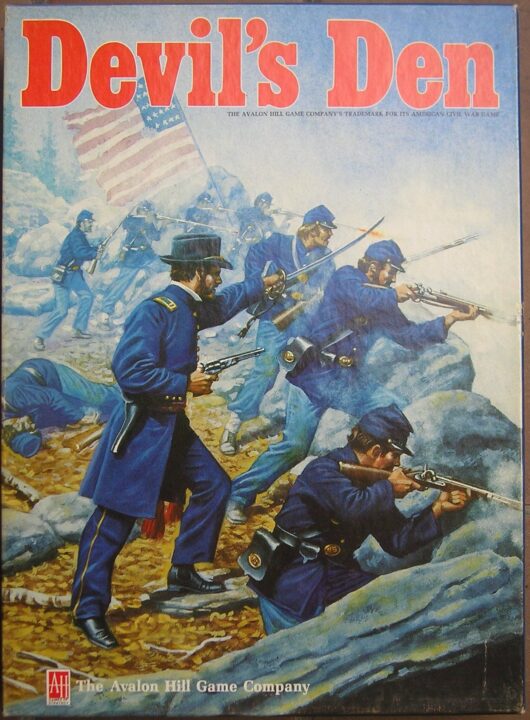You ever wonder if your friends would stab you in the back for three fake gold coins and a shot at glory? Well, in this review, I’m talking about the game that gave me the answer—Devil’s Den. After more than a few heated play sessions (and even a dramatic table-flip from Steve), I’ve got stories, laughter, and some honest takes. So grab your snacks and maybe an extra friend or two—let’s see if this game is devilishly fun or just plain devilish.
How It Plays
Setting up
First, dump all the board bits on the table and pretend you know what you’re doing. Give everyone their player tokens, shuffle the event cards, and set up the main board in the center. Everyone gets a starting stash of coins (not enough, trust me) and sets up in their own little corner of the devil’s den. The devil herself goes right in the middle, ready to ruin your plans.
Gameplay
On your turn, you move your token around the board, picking up goodies and avoiding traps. You’ll draw event cards that will either help you, hurt you, or just make everyone laugh at your pain. Trade, bargain, and backstab your friends as you all try to collect souls and avoid the devil’s wrath. If you have a plan, the dice will probably ruin it, but hey, that’s half the fun.
Winning the game
The winner is the first player to collect the set number of souls and escape the den. Or, if you’re like me and get distracted, you’ll just focus on making sure your friends don’t win. Just watch out, because the game bites back if you get too cocky. First one to reach the exit (with enough souls) wins bragging rights for the night!
Want to know more? Read our extensive strategy guide for Devil’s Den.
How Balanced is Devil’s Den? Skill vs Luck
If you ever had those game nights where someone wins by pure chance (and then brags about it for weeks), you know how luck can spoil the party. When I cracked open Devil’s Den with my friends, I kept a close eye on the balance between skill and luck. Luckily, Devil’s Den seems to steer clear of the “roll the dice and hope for the best” kind of play. There are dice, sure, but the key moves happen in the choices you make.
Devil’s Den gives you big decisions every turn. Should you charge ahead, hide in the shadows, or play it safe? These choices matter a lot, and sometimes my best-laid plans blew up in my face when a friend out-bluffed me. But there’s still that little gremlin of randomness. A sneaky dice roll might mess up your clever strategy. This happened to me: I set up this brilliant trap—felt real smart about it—only to get caught out by an unlucky roll. My friends pointed and laughed, which only made me want to flip the board (I didn’t, because I like being invited back).
So, Devil’s Den mixes skill and luck like peanut butter and jelly. The game mostly rewards planning and a poker face, but you can’t ignore the role of chance. If you can stomach the occasional random upset, you’ll love the challenge. If not, you might get grumpy. But hey, a little drama makes game night fun, right?
Next up, let’s see if Devil’s Den is a one-hit wonder or built for endless game nights—wait till you see what I uncovered about replay value and variety!
Replay Value and Game Variety in Devil’s Den
If there’s one thing I look for in a board game, it’s whether I’ll actually want to play it more than twice. Some games have the staying power of a wet tissue. Luckily, Devil’s Den doesn’t fall apart after one play. I’ve dragged my friends to the table for this one at least a half dozen times, and they’re still speaking to me, so that’s a good sign.
Each playthrough of Devil’s Den feels a bit different. This isn’t just because we keep getting the rules a bit wrong (more on that chaos soon), but because there’s a decent amount of variety mixed in. The game uses modular board pieces, so you can set up the map differently almost every time. The event cards also throw random events at you, which sometimes help, but mostly just ruin your carefully crafted plans (my friend Tim still hasn’t forgiven the plague rats incident of last Saturday). If you have a group of players who like to experiment, this game has a satisfying mix—sometimes a tense standoff, sometimes a mad rush.
However, there’s a teensy gripe I have. While you get all these board set-up options, after your fourth play, you might start feeling that the events could use a bit more punch. Some cards repeat too often, especially in short games, and I caught myself wishing for a couple more curveballs. Expansion, anyone?
Still, I’d say Devil’s Den scores a solid 4 out of 5 for replay value and variety. It won’t gather dust unless you’re allergic to plastic rats and surprise betrayal. Next up, I’ll spill the beans on how rules clarity and learning curve either make you a pro or send you hiding in the actual den!
Mastering the Rules: How Easy is Devil’s Den to Learn?
If you ever spent half a game arguing about rules, then you know how big a deal rulebooks can be. So, I had to put Devil’s Den’s rules to the test. The box claims you’ll be playing in ten minutes. Ha! If you count reading the half-sheet rulebook out loud while your dog barks at the mailman, then sure. But in reality, our group took about twenty minutes to get rolling.
The rules are clear for the basics. Setup makes sense, the game flow is simple (turn order, actions, rinse and repeat). The main actions—moving, battling, and picking up loot—are all explained with examples, which even my friend Bob (who once tried to attack his own teammate in Codenames) could follow. I liked the icons on the board and cards. They match up with the manual, so you don’t have to flip through pages hunting for info. Bonus points for big, bold diagrams next to the hardest rules!
But—and there’s always a but—some of the “special events” and “devil’s trick” cards got us scratching our heads. We needed to check BoardGameGeek for a few situations. If your group is picky about edge cases, expect at least one squabble about what “lose half your loot” really means. Still, after our first match, we never had to reference the rules again. That’s a win for me.
Get ready for things to heat up, because next I’ll talk about the battles, alliances, and trash talk that make Devil’s Den a real test of friendship!
Player Interaction & Competition: The Real Heat in Devil’s Den
Let’s talk about the spicy heart of Devil’s Den: Player interaction. If you like to scheme, bargain, and mess up your friends’ plans, this game is right up your backstabbing alley. You can’t just sit in your corner, minding your board. Devil’s Den pushes you into the fray, tossing elbow after (sometimes literal) elbow.
There’s a lot of action—and I mean lots. Stealing resources from friends, forming fragile alliances, and then breaking said alliances about six minutes later. In my last game, I made a pact with Greg to take down Lisa. Two turns later, Lisa convinced Greg to betray me. I’m still salty. These moments keep the table lively and sometimes make you question your friendship choices. The negotiation phase gets loud. Be prepared to hear someone’s best devil impression. Bonus points if your group does accents.
Competition in Devil’s Den is fierce. The victory conditions force you to watch your rivals and respond wisely. You’ll find yourself planning two moves ahead—until someone throws you off with a surprise action card. It’s not a serene game for quiet folks, but if you like your games with drama, you’re in for a treat.
Would I recommend Devil’s Den? If you love games where players jostle and scheme, this is a must-try. If you prefer a gentle puzzle with minimal conflict, maybe not. For wild nights with frenemies, Devil’s Den is a fiery winner in my book.
Conclusion
Alright, that’s a wrap on my Devil’s Den review! I had a blast plotting, scheming, and arguing with my friends (all in good fun, I promise). The game shines with clever choices and heaps of interaction, but it does stumble a bit with luck and some repetitive events. If you love to bluff and outsmart others, this is your jam! If unfair dice rolls make you want to flip the table, maybe look elsewhere. Overall, Devil’s Den is well worth your time—just don’t blame me when your buddy triple-crosses you in round two.


